The 24 Goons that Game to Steal Your Goals in 2023
How productive and profitable was your 2022 performance?
Where did you win BIG?
What goals did you crush, and how can you keep that momentum rocking into the new year?
Where did you fall short, and what obstacles tripped you up?
If you are the goalie type of person and ramping up with a pen, paper, and a thermos of coffee preparing your goals for 2023, there are 24 obstacles that I know (because I have experienced them) are working out to kick your fanny this next year.

Like a “goon” in hockey, whose role is to act aggressively toward the opposition’s star player (you) to TAKE THEM OUT, there are goons who don’t want you to be successful.
I’ve worked with hundreds of people on shaping their goals, studied goals, and hustled on my own goals for over three decades, and I’ve watched these 24 obstacles trip leaders up over and over again.
They’ve sucker-punched me before, and I bet they’ve stopped you in your tracks as well.
Luckily, these goons can be defeated.
No matter how hard these challenges try to knock you down, I’ve got three ways you can defeat your goon(s) and see your goals accomplished in 2023.
You may be asking, “Who makes a list of 24 anything?”
I do.
I’m a goal nerd, and I love helping others build and crush goals to help leaders win in life and at work.
Goals have helped me start HPG in my late forties.
Goals helped me write books.
Goals helped my wife and I find and renovate our forever home.
Goals will help me build tools and strategies for Optimizing Higher Team Performance.
Pursuing and crushing goals have changed my life from good to great. That’s not a stretch. I can draw a line separating my accidental life and the one where I decided to live intentionally toward my preferred future.
We are straddling the end of 2022 and the start of the new year. Tis’ the season when many people set goals.
This blog article will unpack all persistent and predictable goons who don’t want you to succeed in 2023.
This content is part of my 12-workshop series for leadership teams called the
Lead Team Institute.
So why don’t smart and hard-charging leaders accomplish their goals?
Are you ready?
Read my year-end Very Big Idea,
The 24 Goons that Game to Steal Your Goals in 2023.
As you read along, see if any of these goons are tripping you up right now. And, at the conclusion of this article, I will share with you the three things you can do to keep the goons from stealing your goals in 2023.
The 24 Goons that Game to Steal Your Goals in 2023
1. Lack of Clarity: You don’t know what you want to improve. “As soon as I have a clear vision, I will start progressing, but until then, I’m stuck.”
2. Confusion:
You made your first step but didn’t know what your next step should be. “I wrote the introduction to the book, but now what?” I signed up for the 5k, but now what?”
3. Prioritization: You have a dozen aspirations, but you can’t pick which one is the most important to you. “It’s not that I don’t have goals, it’s that I have too many areas I want to improve in my life.”
4. Selfish Sense:
You don’t have permission to work on yourself. “Every spare minute I have should be spent serving others.”
5. Too Busy: This can be a real or a fake reason. Sometimes you are in a season where there is NO margin. That’s real. It’s fake if you look up your screen time each week and find that you have a good 60 minutes (or more) scrolling the social. Most of you can squeeze more time from your fake excuses for your real goals.
6. Imposter Syndrome: “Who am I to…” Many of you don’t step into the ring to fight for yourselves because you don’t feel worth it.
7.
Comparison: Similar to Imposter Syndrome, you compare yourself to others who are often further ahead in the game of whatever you are pursuing. Never compare your beginning to somebody else’s middle.
8.
Procrastination: You have the time but don’t know how to manage it. You live in the land of “later.” You will learn more about how to slay this dragon of procrastination in the
Lead Team Institute {LTI}.
9.
Fear of Failure:
The goal is crazy important, and the thought of failing to arrive here freezes you in your tracks. You feel you don’t have what it takes. Guess what? You don’t. I don’t. We don’t have what it takes…AT FIRST. The fear of failure lies you into thinking you must be an instant success, and when you are not, you quit.
10. Fear of Success: The opposite of #9 is the fear that if you succeed, you will need to live up to that success as a lifestyle now that the expectations are raised. This is the cousin-fear of Imposter Syndrome. “What if this goes well, and I can’t live up to the expectations for the long haul?”
11. Unrealistic Goal: This is what I call the “marathon in a week” goal. You haven’t laced up a pair of running shoes in three years and believe you can run a marathon in a week. Crazy big goals can cripple you before you even get started.
12.
Broken Soundtracks: This is when your mindset gets in the way. This comes from the reality that your thoughts become your actions, and your actions turn into results. If your thoughts are not right, your results will also be off. Your mindset is THE greatest inhibitor of your success in life and at work. Where is your mind down-playing your potential?
At the end of 2023, what would it feel like to have all your open positions and your momentum reclaimed?
Reclaim Your Momentum {LIVE}
✅ Reclaim Your Time
✅ Reclaim Your Energy
✅ Reclaim Your Priorities
”Wow! I didn’t realize I was in desperate need of this talk and these tools in my life.”
“This message so profoundly impacted us. We are now beginning to edit out the unhealthy team behaviors interfering with our performance.
“The timing of this message could not have been better for the health of our team.”
Without a new focus and approach, it's easy to continue to:
➜ Sacrifice self and family on the altar of work.
➜ Overcommit and underdeliver.
➜ Be busy but no longer brilliant.
➜ Juggle more priorities than what we can complete.
Worst of all, other people — other tasks, jobs, and projects — will continue to hijack your life.
It’s time to change that by implementing a proven practice that works.
Reclaim Your Momentum {LIVE} is a two-hour keynote for campus/district leaders and their teams.
This interactive session will inspire, challenge, and equip your team to accelerate healthy team culture and overall team performance.
Your team will leave this session with the following:
- A shaper clarity of your unique leadership superpower we call your Natural Leadership Profile.
- A scalable framework for building a Higher Performance team and culture.
- Practical tools to accelerate team communication, connection, alignment, capacity, and execution.
Book Your Team Retreat Today – Here.
13.
The Weight of the Work: When you look at the breadth of the goal and get overwhelmed by the work it will take to accomplish ALL of it, you get stopped in your tracks. The key to accomplishing big goals is to “chunk” your goals into smaller daily tactical tasks.
14.
Perfectionism: If you can’t be perfect the first time, why even try? Perfection is fear in a tuxedo. It can present as a good thing, but in reality, it is an insecurity we all must conquer.
15. Inconsistent Effort: Start. Stop. Start. Stop. You don’t benefit from the compounding effect of momentum.
16. Impatience: You (and I) want to see immediate success. The fact is that any goal worth pursuing is GUARANTEED to take longer than you want.
17. Unexpected Challenge: This might be legit. Something unexpected (a health issue, family emergency, or loss of a loved one) crept into your reality when you planned your week, month, or quarter and knocked you off course.
18. Loss of Excitement: Your motivation tank runs dry. “I’m just not feeling it anymore.”
19. Switch-a-Roo: This can also be legit. For example, I used to run a ton and had running mileage goals that I would regularly track. A few years back, I switched to cycling because of some nagging knee injuries that I was dealing with. That’s different from reading the first chapter of a book that I NEED to read, then buying different one that appears to be more interesting and that I WANT to read.
20. Criticism: This can be perceived (inhibition or imagined) or a genuine criticism offered by someone you respect. It’s typically the former that becomes massively colorful in clouding your mindset.
21. Distraction: It’s much easier to watch Netflix than to write a book. Exactly. A whole industry is set on keeping you more accidental (entertained) than intentional (on purpose).
22. Too Expensive: If you count the cost and determine that completing your MBA will only be possible by going into unnecessary debt, you may want to protract your goal timeline until you can afford it. That’s legit. What’s not is when you believe that self-publishing your first book will cost you thousands of dollars. That’s a fear that is just not true, and you get stopped by the thought that your goal will be too expensive.
23. Too Late: This fear that you have missed the boat. “I’m washed up. I should have been working on this 20 years ago, but I didn’t, and I feel out of time.”
24. Bad Advice: A family member, friend, or self-help guru gave you a plan bound to fail. You receive some terrible advice that you believed at the time and has you double-guessing everything.
These are largely why smart and hard-charging leaders don’t finish their goals. I could have added a few more but know this; Every one of those reasons (and the ones I missed) boils down to one of three things:
- An Abundance of Fear
- A Disconnection from Desire
- A Lack of Trusted Community
Example: #1 –
Lack of Clarity = A Disconnection from Desire
Example: #2 – Confusion = An Abundance of Fear
Example #24 – Bad Advice = A Lack of Community
Your Turn
Take a minute to step through each of the 24 Goons to Steal Your Goals in 2023 and put the letter F (Fear), D (Desire), or C (Community) next to each on the list.
As you work on your goals for 2023 and run into thoughts that might interfere with you putting that actual pen to actual paper, ask yourself:
- Is this a Fear issue?
- Is this a Desire issue?
- Is this a Trusted Community issue?
This will help you appropriately counter-punch the issue.
- If this is a Fear issue, the hero of COURAGE must show up.
- If this is a Desire issue, the hero of CLARITY must show up.
- If this is a Trusted Community issue, the hero of ENGAGEMENT must show up.
How do you do that? Join the hundreds of campus leaders resisting the gravitational pull of average performance in 2023 by enrolling in one of the MANY resources we have available to leaders and teams in the new year.
Click here to sharpen your advantage and Optimize Your Team’s Performance.
More Blog Articles



